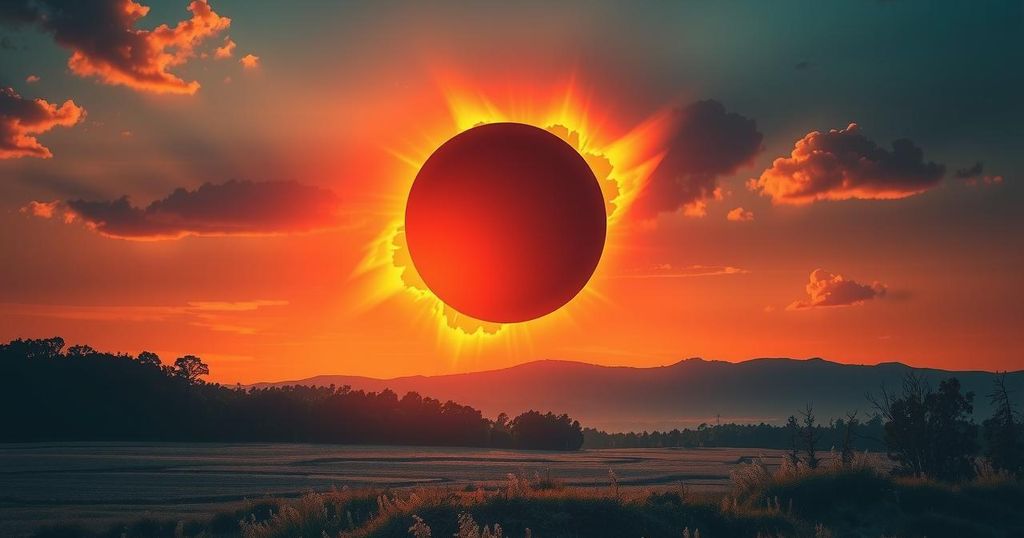Citizen Scientists Gear Up for the 2024 Solar Eclipse
The April 8, 2024, total solar eclipse presents an unparalleled chance for citizen scientists to contribute to solar research. With public engagement at the forefront, projects like the Eclipse Megamovie and the Eclipse Soundscapes are encouraging volunteers to assist in gathering valuable data. This eclipse coincides with a period of heightened solar activity, making it a significant event for researchers and enthusiasts alike.
The recent “ring of fire” eclipse was quite a sight, blanketing the sky and putting on a show for those lucky enough to witness it. Still, the upcoming total solar eclipse on April 8, 2024, promises to take excitement to another level. This event will cross the United States at a time when the sun is ramping up to solar maximum, a period marked by bustling solar activity every 11 years. Expect more sunspots, stronger radiation, and the potential for solar storms disrupting satellites and Earth’s power grids.
Astrophysicist Kelly Korreck from NASA is buzzing with enthusiasm about this eclipse, as it coincides with increased solar activity, offering a unique chance to see the sun’s outer edges like never before. More scientific gear than ever is at the ready to investigate how these solar phenomena affect our planet and atmosphere. This isn’t just a few scientists in a lab—Korreck emphasizes an exciting push for public participation in science projects surrounding the eclipse.
And there are real ways citizens can jump in and make meaningful contributions! First up, volunteers stationed along the eclipse’s path of totality will snap pictures to create the 2024 Eclipse Megamovie. This will be a revamp of the 2017 effort, which consisted of crowd-sourced eclipse images stitched together into a single movie. Laura Peticolas, a physicist at Sonoma State University, points out that this time the aim is data-gathering in a more organized manner to yield publishable results.
If you have a high-quality camera, you’ll collect images that are sized and aligned just right, optimizing their scientific value. Peticolas notes, “We are one of the only [volunteer-based] teams looking at how the [visible plasma jets] move from the bright sun’s photosphere out to the solar wind.” For those interested, they must apply by October 31 to participate, as the collaboration is supplying sun-tracking mounts to the first 100 volunteers.
But what if your tool of choice is just a smartphone? Well, you can still get involved—assuming you can get to the path of totality. The SunSketcher app allows volunteers to time the appearance of Baily’s beads, the bright dots visible as sunlight peeks through lunar valleys just before and after totality. “Data from volunteers who install the app will allow us to precisely determine the shape of the sun,” explains Gordon Emslie of Western Kentucky University. It’s a simple way to participate, and all you have to do is set it up before the big moment.
Eclipses are fascinating not only for their visual spectacle but also for their significant impact on wildlife. The Eclipse Soundscapes project invites volunteers to capture sound data during this cosmic event, giving researchers insight into how animals react when day turns to night. Whether you build your equipment or apply for a pre-made kit, there’s a role for everyone. MaryKay Severino from ARISA Lab notes that eclipses are “multisensory events,” emphasizing the importance of sound along with visual observations to understand nature’s response to such phenomena.
Other projects are popping up too, like the Dynamic Eclipse Broadcast Initiative, which is seeking teams to use specialized equipment to monitor solar corona ejections during the eclipse. Each project has limited space for volunteers, so if any of these appeal to you, reach out quickly!
Amateur radio enthusiasts also have something to contribute. The HamSCI community will examine how radio signals are affected by the eclipse overhead, while NASA’s Radio JOVE project offers information on monitoring the eclipse with radio telescopes. Overall, Korreck insists there’s never been a better opportunity for citizen scientists to lend a hand in solar eclipse research. If you miss out on this one on April 8, you’ll be waiting another 20 years for a similar chance.
The 2024 total solar eclipse is more than just a viewing experience; it’s a chance for anyone to engage in significant scientific efforts. With the combination of heightened solar activity, innovative projects, and the call for volunteers across different platforms, citizen scientists can leave their mark on research. Don’t miss the opportunity to contribute—whether by capturing the eclipse on camera, using an app, or even observing wildlife changes. This event promises to be a once-in-a-lifetime experience for anyone willing to participate.
Original Source: www.sciencenews.org




Post Comment